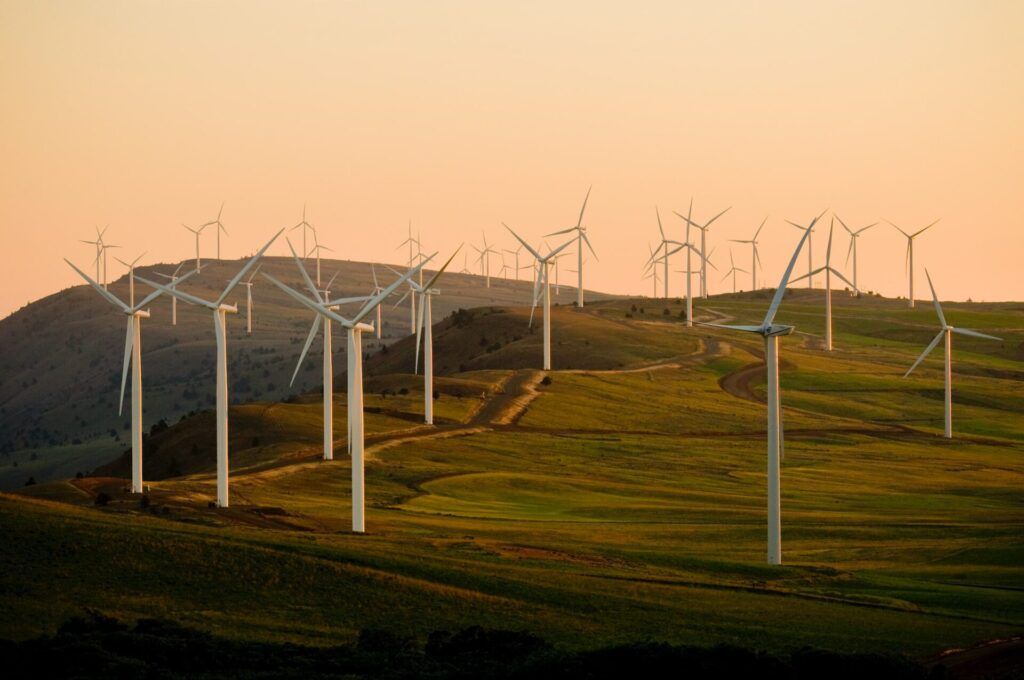Clean energy is the future. Permitting reform is how to get there
By Andrew Dessler | February 1, 2023
 Photo by American Public Power Association on Unsplash
Photo by American Public Power Association on Unsplash
This article is part of a series of commentaries on permitting reform. Read the rest here.
The transition from a fossil-fuel economy to a clean-energy economy is going to require the United States to build a lot of stuff in the next 30 years. The United States needs to build and deploy several terawatts of climate-safe energy (1 terawatt = 1,000 gigawatts = 1,000 coal-fired power plants) over the next decade—roughly 1-2 gigawatts per week.
But just building enough solar, wind, nuclear, geothermal, or hydroelectric power is not sufficient. Renewable energy is often generated in remote areas, far from population centers. This means that the energy needs to be transported over long distances, requiring construction of a robust transmission and distribution system. This infrastructure includes high-voltage transmission lines, substations, and distribution networks, all of which are essential for getting clean energy to homes and businesses.
And this doesn’t even include infrastructure necessary for building resilience and adaptation to climate change. Climate change is causing an increase in extreme weather events such as floods, droughts, and extreme sea-level events. Dealing with that will require the construction of large-scale infrastructure that can withstand these events, such as sea walls, flood protection systems, and water storage systems.
Building all this stuff is going to be hard. One of the biggest barriers is the time and costs associated with obtaining the necessary permits and approvals from various regulatory agencies. These permitting processes can be complex and time-consuming, involving multiple jurisdictions and layers of review and approval. While the approval process serves an important role in our society, it can be abused: The complexity of the process gives motivated individuals the ability to drag out the approval process, which can be a significant hurdle for energy companies looking to invest in renewable energy projects.
For example, in his book Superpower, Russell Gold details efforts by a private company, using private funds, to build a transmission line to bring wind power from Oklahoma to Tennessee, where it could then be transported up and down the East Coast. Everyone from NIMBY property owners, power companies that didn’t particularly want the cheap energy, and politicians opposed to renewable power were arrayed against the line and held up the permitting long enough that the company finally gave up.
As the economics of energy has turned away from fossil fuels and towards clean, renewable energy, those trying to prop up fossil fuels have internalized Superpower’s lesson and used the permitting process as a strategy to slow down the clean-energy revolution. Permitting reform can help to address this problem by streamlining and simplifying the permitting process, making it easier for energy companies to obtain the necessary approvals. For example, they can give the federal government the ability to approve projects that that bogged down due to local concerns. This can help to reduce the time and costs associated with deploying clean energy technologies and make it harder for fossil fuel companies to stall development of competing (and superior) energy sources.
A worry with permitting reform is that it will actually encourage the construction of fossil fuel energy. This is a legitimate concern, but it is probably overblown. While some fossil fuel projects may get approved that would not have otherwise been approved, the market understands that solar and wind power will power the future. Because of this, permitting reform is essential for a clean energy future.
Together, we make the world safer.
The Bulletin elevates expert voices above the noise. But as an independent nonprofit organization, our operations depend on the support of readers like you. Help us continue to deliver quality journalism that holds leaders accountable. Your support of our work at any level is important. In return, we promise our coverage will be understandable, influential, vigilant, solution-oriented, and fair-minded. Together we can make a difference.
Keywords: clean energy, permitting reform, permitting reform package, renewable energy, solar power, wind power
Topics: Climate Change















By Andrew Dessler
Clean energy is the future. Permitting reform is how to get there
By Sanjay Patnaik, Rayan Sud
How to modernize permitting for a low-carbon economy
By Jessica Lovering
The process is what matters
By Jamie Pleune
Get rid of bottlenecks—not environmental reviews
By Dustin Mulvaney
Want clean energy, fast? ‘Streamlining’ environmental reviews could have the opposite effect